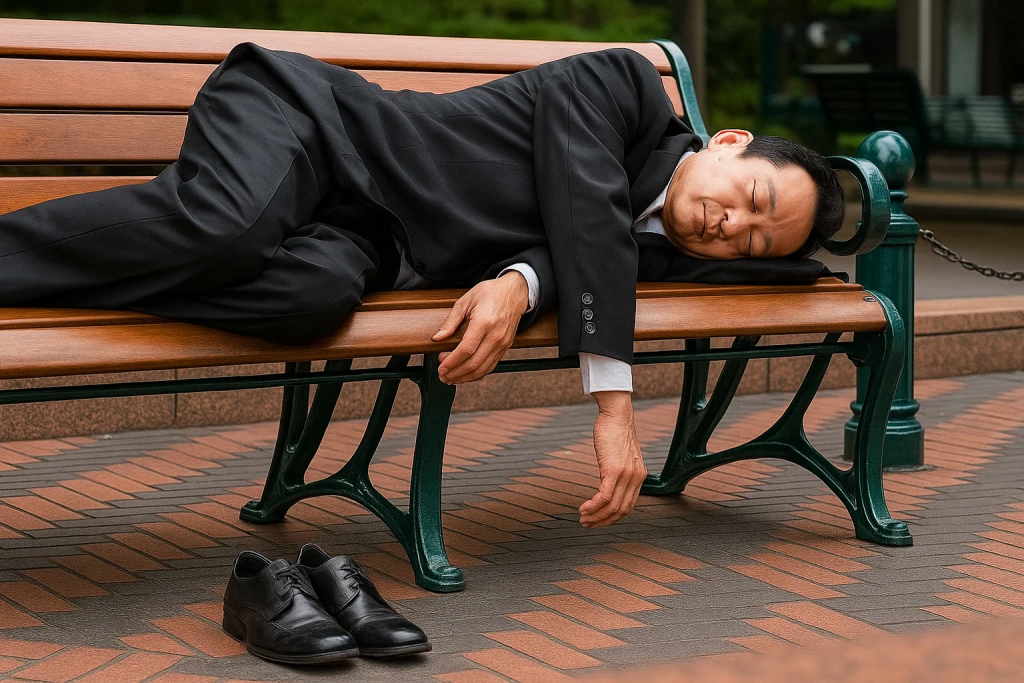7 Reasons Why Seven Hours Of Sleep In Japan Feels Better Than In America—Here’s What’s Different
You log a solid seven hours in Japan and wake up alert, clear-headed, and ready to roll. Cross the Pacific, spend the same seven hours in an American bedroom, and you’re prying open your eyelids with coffee.
What gives?

Below are seven science-backed habits baked into Japanese culture that turn ordinary sleep into next-level recovery—plus how you can steal them tonight.
1. Cold Bedrooms (55°F vs. 68–72°F)
A large-scale study across 2,190 Japanese households revealed a surprising truth: in over 90% of homes, the indoor winter temperature drops below 18°C (64.4°F)—the WHO’s minimum recommendation. The typical bedroom hovers around 55°F at night.
That 17-degree difference isn’t about comfort. It’s biology.
Your brain needs to cool by 2–3°F to initiate deep sleep. A cold room accelerates that process, unlocking longer and deeper rest.
2. Sleep Surfaces: Firm vs. Soft
American sleep culture worships plush comfort—memory foam, cloud-like beds, and pillowtop everything. But the result? Poor spinal alignment and disrupted sleep cycles.
Japanese tradition uses firm futons on tatami mats.
• Better posture
• Reduced back pain
• Can be aired out daily to prevent mold
Firm support leads to better sleep structure. Your spine doesn’t need a hug—it needs stability.
3. Pre-Sleep Rituals: Screens vs. Ofuro
Americans wind down with screens—58% use devices within an hour of bed, flooding the brain with blue light and stimulation.
Japanese wind down with ofuro—a ritual hot bath around 104°F.
• Raises core body temperature
• Triggers a powerful cooling drop afterward
• This drop is a natural signal to fall asleep
Hot bath → cold room = elite sleep conditions.
4. Cultural Framing: Shame vs. Honor
In the U.S., tiredness is weakness. You snooze, you lose. We chase energy with caffeine and hide fatigue with shame.
In Japan, tiredness is honored.
• “Otsukaresama deshita” literally means “You must be tired” and is a compliment
• Falling asleep at work = dedication
• Inemuri (napping in public) = acceptable
When culture respects rest, your body stops fighting it.
5. Sleep Recovery: Duration vs. Efficiency
Americans obsess over 8+ hours and guilt about naps. Weekend catch-up sleep becomes a survival tactic.
In Japan, recovery is strategic:
• Embrace short, high-quality sleep
• Master the 20-minute power nap
• Focus on efficiency, not hours
6 hours of high-quality Japanese sleep beats 8 hours of anxious American tossing.
6. Tech Boundaries: Chaos vs. Curated
U.S. bedrooms are digital playgrounds—TVs, phones, tablets, all packed with stimulating content.
Japanese teens may own smartphones, but their habits differ:
• More disciplined bedtime boundaries
• Less stimulating pre-sleep content
Sleep starts long before your eyes close—what you see and do before matters.
7. Pillow Support: Soft vs. Structured
American pillows are big, soft, and often cause your head to tilt forward, misaligning your neck for hours.
Japanese use sobakawa buckwheat hull pillows:
• Hulls contour to neck, not whole head
• Maintain proper cervical alignment
• Small size = targeted support
• Don’t collapse over time
Proper pillow use cuts neck pain by up to 50%.
What You Can Steal from Japan’s Sleep Culture
- Keep your bedroom at 60–65°F
- Take a hot bath 1–2 hours before sleep
- Use firmer sleep surfaces
- Celebrate tiredness instead of masking it
- Embrace 20-minute naps without guilt
- Build strict digital bedtime boundaries
- Choose supportive, structured pillows
Better sleep isn’t just about how long you’re unconscious. It’s about creating a nightly ritual that trains your body to recover, reset, and thrive.